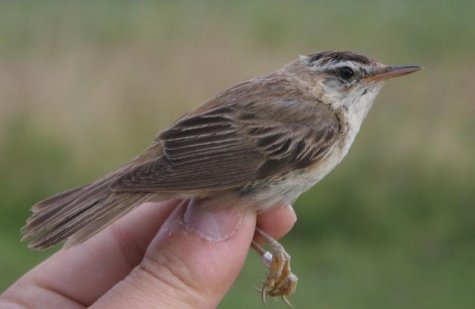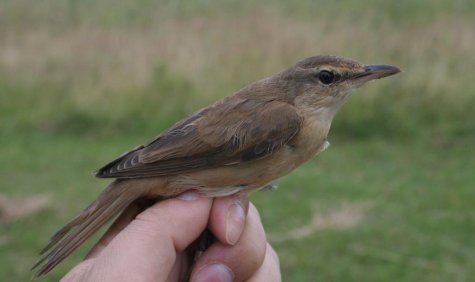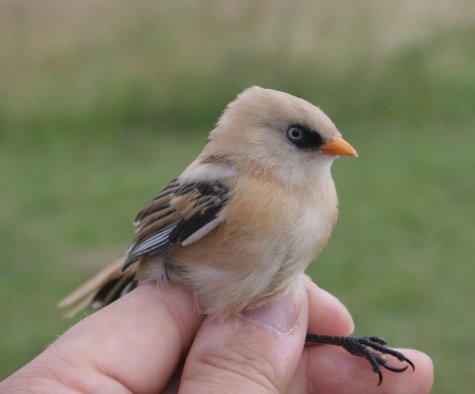Birder's diary - 2.-3.08
Birder Margus Ots, Linnuvaatleja.ee
Translation: Liis
August 2nd
This year I have mostly been on birding trips simply for my own pleasure. But now is a good time to do something useful too in between. In August the forest gallinaceous birds will be counted (capercaillie (Tetrao urogallus), black grouse (Tetrao tetrix), hazel grouse (Tetrastes bonasia)) and for this several tens of 8 km long census tracks have been marked all over Estonia. Last year I counted on four tracks myself and I will try to walk at least a few tracks this year too . The tracks are in forest landscapes and laid out as squares (side 2 km), the starting and end point will then be in the same place and so no need to trundle back a long distance to your car. The track should be walked in as straight a line as possible, whatever obstacles might be in the way – overgrown clearings, windfelled trees, rivers, ditches or areas flooded by beavers. So this morning a Põlva county track got walked through. Creeks had to be crossed twice on the path, but I was already soaked through from dew after the first couple of hundred metres in high grass. But the weather was fine and the hike pleasantly refreshing. There are not many gallinaceous birds in the forests of south-eastern Estonia, there are no particularly large forest massifs and the forests are rather thoroughly logged for timber too. So it was not surprising at all that on today’s path I only met a hazel grouse. Last year I didn’t run into any of the forest hens at all on the same path. The following paths have some old forest too and there I should at least meet some capercaillies too, at least last year it succeeded.
August 3rd
Sedge warbler – our most numerous warbler. The bird’s flight and tail feathers are rather worn, thus an adult. The feathers of juveniles are fresh now and with brighter colours. (03.08.2012 Pulgoja bird station)
Birds in the Pulgoja reed banks near Häädemeeste in Pärnumaa have been ringed a lready from 1979 primarily to study the migration of reed warblers. At Pulgoja bird station birds are caught and ringed every year during the last decade of July and in August. I have joined the work at the bird ringing stations from 1985, and in recent years also come to Pulgoja for a couple of days. It had been rather windy or rainy during the last few days and very many birds had not been caught at Pulgoja; altogether about 1000 birds have been ringed there this year. Now it seemed as if a night with relatively quiet south and south-easterly winds would come and there was hope that this morning’s catch would be larger than during the previous days. So I decided to start moving towards Pulgoja in the night to be there before sunrise.
Great reed warbler – our largest warbler (03.08.2012 Pulgoja bird station)
Beginning at sunrise about a hundred birds came into the bird station nets in the course of a few hours. All got a ring on the leg, and were then at once set free. The great majority of the birds ringed this morning were sedge warblers (Acrocephalus schoenobaenus), reed warblers (Acrocephalus scirpaceus)and marsh warblers (Acrocephalus palustris), in addition some barn swallows (Hirundo rustica), common whitethroats (Sylvia communis), willow warblers (Phylloscopus trochilus), great reed warblers (Acrocephalus arundinaceus), and as the most exciting creatures, a couple of bearded reedlings (Panurus biarmicus).
Young bearded reedling. Beak is yellow, thus a male bird. The females have a dark grey beak. (03.08.2012 Pulgoja bird station)
On top of that it was interesting to observe the doings of great egrets (Egretta alba) at the Pulgoja beach. Because the egrets were mostly hidden in the reeds an idea of the number of these proud birds could only be had when some white-tailed eagle (Haliaeetus albicilla)scared all into flight. Once I managed to count at least 74 great egrets but because I myself was among high reeds at the moment unfortunately I could not see low-flying birds and quite likely they were considerably more numerous. Many great egrets were seen today on the other side of Pärnu too at Audru polder, where 52 birds in one group were seen.











